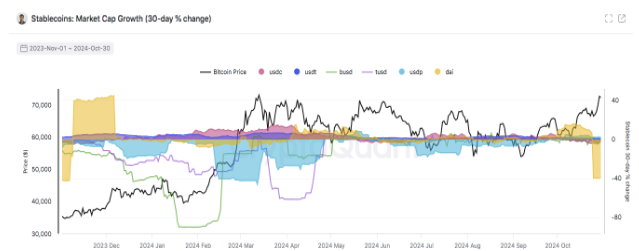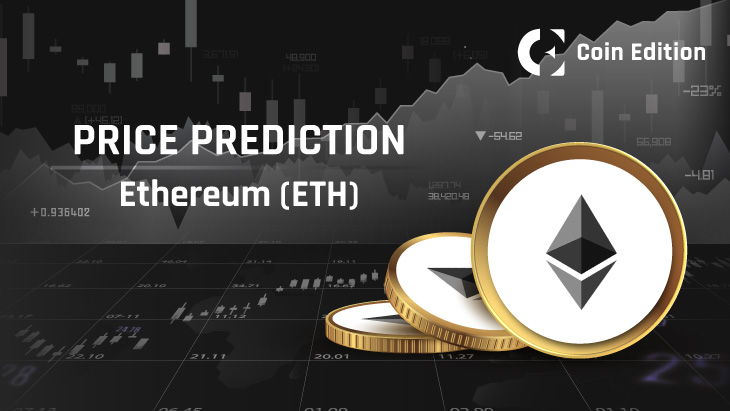- Stablecoin use rises in Korea, with 10% of trade using USDT, mainly on Tron’s network.
- Tron overtakes Ethereum for USDT since 2021, driven by lower fees and faster transaction times.
- USDT shows steady growth, while DAI and BUSD face fluctuations, likely from regulatory impacts.
Stablecoin adoption in South Korea is benefiting the financial market, with Tether (USDT) transactions leading the way.
Government reports indicate that roughly 10% of domestic trade transactions now involve stablecoins. This transition is gaining popularity among smaller traders and business owners because of reduced transaction times and lower fees.
Tether and Tron Dominate Stablecoin Transactions
The shift toward stablecoins is led by USDT, which holds a 72% market share in South Korea through the Tron network. Tron’s speed and low transaction fees have made it the preferred choice over Ethereum for USDT transfers, highlighting trends in blockchain-based transactions.
Additionally, data shows the transition from Ethereum to Tron for Tether transfers started around 2021. By 2023, Tron-based USDT transactions made up most transfer amounts and counts.
Source: Ki Young Ju
Stablecoin Usage in Domestic Trade
In the Korean trade sector, stablecoins are becoming increasingly common. This follows a trader who received $1 million in trading fees in USDT, excluding the need for traditional bank documentation and delays.
An insider familiar with these trades says many small traders and individual business owners find stablecoins to be a cost-effective and efficient solution, especially because corporate accounts for such transactions are unavailable in Korea.
The market capitalization for the top stablecoins, including USDT, USDC, BUSD, DAI, and TUSD, has shown different trends from November 2023 to October 2024.

BUSD and DAI have experienced more fluctuations, especially during early 2024 and late 2024. DAI fell in November 2023 and October 2024, which could be due to market adjustments affecting its DeFi-linked structure.
Tether’s Market Leadership
Between July 2022 and October 2024, USDT has steadily grown its market share, reaching over $120 billion by October 2024. USDC is still the second-largest stablecoin, although it has shown signs of stabilization at a lower level after early 2023.

BUSD has seen a sharp decline, possibly because of regulatory actions, while newer stablecoins like PYUSD continue to show modest growth.
Related:
Stablecoin Market Dips 2.7% as PYUSD Rewards Decline Impacts Growth
South Korea to Tighten Oversight of Cross-Border Crypto Transactions Starting Next Year
Disclaimer: The information presented in this article is for informational and educational purposes only. The article does not constitute financial advice or advice of any kind. Coin Edition is not responsible for any losses incurred as a result of the utilization of content, products, or services mentioned. Readers are advised to exercise caution before taking any action related to the company.







